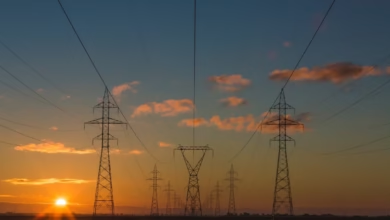Energy Revolution: Embracing Renewables, Innovations, and the Path to a Sustainable Future

In an era marked by growing concerns over climate change and the urgent need for sustainable energy solutions, the transition to renewable energy sources has become a central focus for governments, industries, and consumers alike. The rise of solar, wind, and hydrogen power represents a significant shift in how we generate and consume energy, spurred on by government incentives aimed at facilitating this clean energy revolution. However, while the potential benefits of renewables are immense, challenges such as energy storage and infrastructure adaptation remain critical hurdles to overcome. This article delves into the multifaceted landscape of renewable energy, exploring how traditional oil and gas companies are evolving in response to these changes, the pivotal role of electric vehicles in reducing our reliance on fossil fuels, and the economic implications of fluctuating energy prices. Additionally, we will examine the future of nuclear energy in a low-carbon world and highlight innovations in energy efficiency that promise significant cost savings. Join us as we navigate the complexities of this energy transition and envision a sustainable future powered by clean energy.
- 1. "Powering Change: The Surge of Renewable Energy Sources and Government Incentives"
- 2. "Overcoming Hurdles: Addressing Energy Storage Challenges in a Renewable Future"
- 3. "Navigating the Transition: How Traditional Energy Companies and Electric Vehicles Are Shaping Tomorrow's Energy Landscape"
1. "Powering Change: The Surge of Renewable Energy Sources and Government Incentives"
The transition to renewable energy sources has gained unprecedented momentum in recent years, driven by a combination of technological advancements, environmental concerns, and shifting economic landscapes. Solar, wind, and hydrogen power are at the forefront of this energy revolution, making significant strides in capacity and efficiency. Governments worldwide are recognizing the urgent need to address climate change and reduce greenhouse gas emissions, leading to the implementation of various incentives aimed at accelerating the adoption of clean energy technologies.
In many regions, financial incentives such as tax credits, grants, and subsidies are crucial in lowering the initial investment costs associated with renewable energy projects. For instance, the federal investment tax credit (ITC) in the United States has played a pivotal role in boosting solar energy installations by allowing homeowners and businesses to deduct a significant percentage of their solar system costs from their federal taxes. Similarly, feed-in tariffs and power purchase agreements (PPAs) have encouraged the growth of wind energy by guaranteeing fixed payments for energy produced, providing financial stability for developers and investors.
Beyond financial incentives, governments are also fostering renewable energy growth through regulatory frameworks and policy initiatives. Many countries have set ambitious renewable energy targets, mandating a certain percentage of energy production from renewable sources. This creates a conducive environment for investment and innovation in the sector. Additionally, governments are increasingly investing in research and development to enhance the efficiency and storage capabilities of renewable technologies, paving the way for a more reliable and resilient energy grid.
While these incentives have catalyzed the growth of renewable energy, challenges remain. Energy storage, for example, is a critical component in managing the intermittent nature of solar and wind power. Governments are investing in advanced battery technologies and other storage solutions to ensure a consistent energy supply, even when production fluctuates.
In conclusion, the rise of renewable energy sources is a complex interplay of market forces, technological advancements, and government support. As nations prioritize clean energy in their policy agendas, the cumulative impact of these efforts could significantly reshape the global energy landscape, driving a transition toward a more sustainable and low-carbon future.
2. "Overcoming Hurdles: Addressing Energy Storage Challenges in a Renewable Future"
As the world transitions to renewable energy sources such as solar and wind, one of the most pressing challenges is energy storage. Unlike traditional fossil fuel systems, which can generate power on demand, renewable energy is often intermittent—solar power is only generated during sunlight hours, and wind power relies on weather conditions. To ensure a reliable energy supply, effective storage solutions must be developed to capture excess energy produced during peak generation times and release it when demand is high.
Current energy storage technologies, such as lithium-ion batteries, have made significant strides, yet they are not without limitations. Issues such as high costs, resource scarcity, and environmental concerns regarding battery production and disposal pose substantial hurdles. Additionally, existing battery technologies may not provide sufficient capacity or longevity for larger-scale applications needed to support grid stability.
Innovations in energy storage are emerging to address these challenges. Research is underway to develop alternative battery technologies, including solid-state batteries and flow batteries, which promise greater efficiency, longer life cycles, and reduced environmental impact. Additionally, advancements in other storage methods, such as pumped hydro storage and compressed air energy storage, are being explored as viable solutions for large-scale energy management.
To facilitate this transition, governments and private sectors are investing in research and development to drive down costs and enhance the performance of energy storage systems. Policy incentives, such as grants and tax credits, are being implemented to encourage innovation and adoption of new storage technologies. Moreover, integrating energy storage with smart grid technologies can optimize energy distribution and improve overall system resilience.
As these advancements continue, overcoming the energy storage challenges will be crucial for realizing a sustainable and reliable renewable energy future. By addressing these hurdles, society can move closer to a low-carbon energy system that meets growing demand while reducing dependency on fossil fuels.
3. "Navigating the Transition: How Traditional Energy Companies and Electric Vehicles Are Shaping Tomorrow's Energy Landscape"
The transition to a low-carbon energy landscape is being significantly influenced by traditional energy companies and the rise of electric vehicles (EVs). As the world shifts towards renewable energy sources, established oil and gas firms are adapting their business models to integrate cleaner technologies and diversify their portfolios. Many of these companies are investing in renewable energy projects, such as solar and wind farms, and are exploring hydrogen production as a sustainable energy carrier. This shift not only helps them remain competitive but also aligns with global climate goals and consumer demand for greener alternatives.
Electric vehicles play a crucial role in this transition, acting as both a catalyst for change and a new market opportunity for traditional energy companies. The increasing adoption of EVs reduces reliance on fossil fuels, thereby decreasing greenhouse gas emissions. As more consumers opt for electric vehicles, the demand for electricity rises, prompting energy companies to enhance their infrastructure to support EV charging networks. This creates a symbiotic relationship where EV adoption drives the need for cleaner energy sources, compelling traditional companies to invest in renewable technologies.
Moreover, the intersection of traditional energy and EVs presents challenges and opportunities in energy storage solutions. As the grid accommodates more intermittent renewable sources, such as solar and wind, effective energy storage becomes essential to balance supply and demand. Traditional energy companies are well-positioned to leverage their existing infrastructure and expertise to develop advanced storage technologies, such as battery systems or hydrogen storage solutions, which can help stabilize the grid and support the growing EV market.
In conclusion, the collaboration between traditional energy companies and the electric vehicle sector is reshaping the future of energy. By embracing renewable technologies and investing in innovative energy solutions, these entities are not only navigating the transition to a low-carbon economy but also redefining their roles in a rapidly evolving energy landscape. This partnership is vital for achieving sustainability goals and ensuring a resilient energy future.
In conclusion, the transition to renewable energy sources such as solar, wind, and hydrogen power is not just a trend, but a necessary evolution in our quest for a sustainable future. Governments around the world are playing a pivotal role by incentivizing clean energy initiatives, which fosters innovation and accelerates the adoption of these technologies. However, the challenges of energy storage remain a critical barrier that must be addressed to ensure the reliability and efficiency of renewable systems.
As we navigate the complexities of this energy transition, traditional oil and gas companies are adapting their strategies to remain relevant, while electric vehicles are increasingly becoming a cornerstone of efforts to reduce fossil fuel dependency. The economic implications of fluctuating energy prices further underscore the need for a diversified and resilient energy landscape, one that prioritizes efficiency and sustainability.
Looking ahead, the future of nuclear energy may also play a significant role in achieving a low-carbon world, alongside ongoing innovations in energy efficiency that promise substantial cost savings. Together, these elements form a comprehensive approach to combatting climate change, ensuring energy security, and fostering economic growth. By embracing this multifaceted transition, we can pave the way for a cleaner, more sustainable energy future that benefits both people and the planet.





